Explore the lunar cycle from Amavasai to Pournami — blending astronomy, culture, and spirituality in one insightful read.
Understand how each phase of the Moon influences nature, emotions, and rituals.
A perfect guide for science lovers, spiritual seekers, and curious minds.
Introduction
The Moon has always been more than just a glowing object in the night sky — it’s a compass of time, a source of mystery, and a symbol of change. For centuries, farmers, poets, scientists, and spiritual seekers have observed its journey from darkness to light, from Amavasai (New Moon) to Pournami (Full Moon).
This 29.5-day lunar cycle is not just a scientific phenomenon but also a mirror of life’s rhythms — beginnings, growth, fullness, and release. In this blog, we’ll explore both the science and spiritual significance of each phase, showing how the Moon’s journey can help us stay in harmony with nature and with ourselves.
1. Amavasai – The New Moon

- Scientific Explanation:
Amavasai, or the New Moon, occurs when the Moon is directly between the Earth and the Sun. The side of the Moon facing Earth is in complete shadow, making it invisible in the night sky.
- Astronomical Facts:
Marks Day 0 of the lunar cycle.
Ideal time for stargazing, as the absence of moonlight makes faint stars and galaxies easier to see.
New Moons often coincide with solar eclipses if alignment is precise.
- Cultural & Spiritual Significance:
In India, Amavasai is seen as a time for introspection, prayer, and ancestral rituals (Pitru Tarpanam). Many believe this phase carries quiet energy that supports cleansing negativity and planting seeds for new beginnings.
2. Waxing Crescent – The Growing Light (Days 1–6)
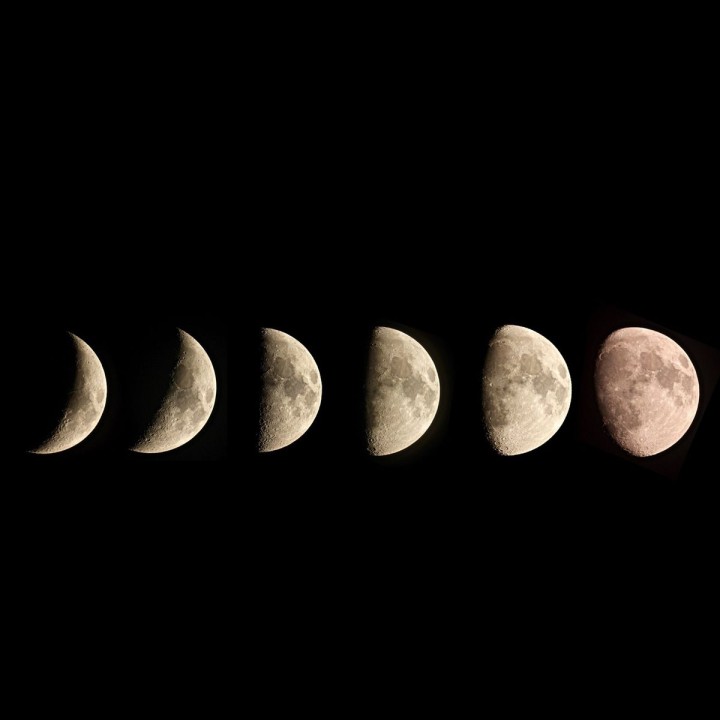
- Science:
A small sliver of the Moon, known as the waxing crescent, becomes visible as the Moon orbits Earth.
- Cultural Perspective:
This phase symbolizes growth and new opportunities, making it an auspicious period for starting ventures or setting intentions.
- Fun Fact:
During this phase, the Moon sets shortly after the Sun, creating beautiful “evening crescent” skies.
3. First Quarter – Half Moon (Around Day 7)
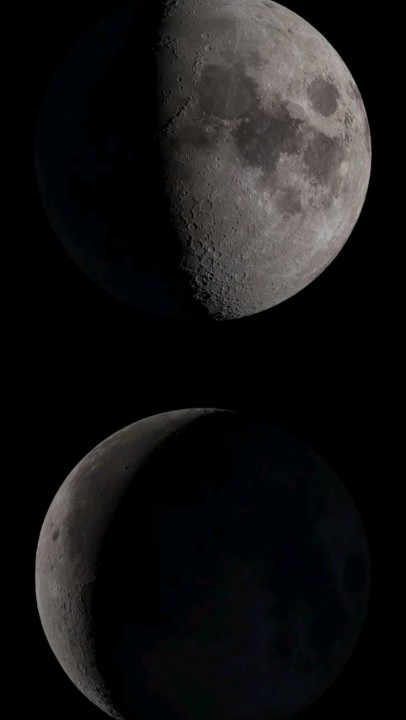
- Scientific Details:
At the first quarter, half of the Moon is illuminated. Despite the name, the Moon is a quarter of the way through its cycle.
- Symbolism:
Represents balance and decision-making.
Spiritually, it is believed to be a time to take action on goals initiated during Amavasai.
4. Waxing Gibbous – Building Energy (Days 8–13)
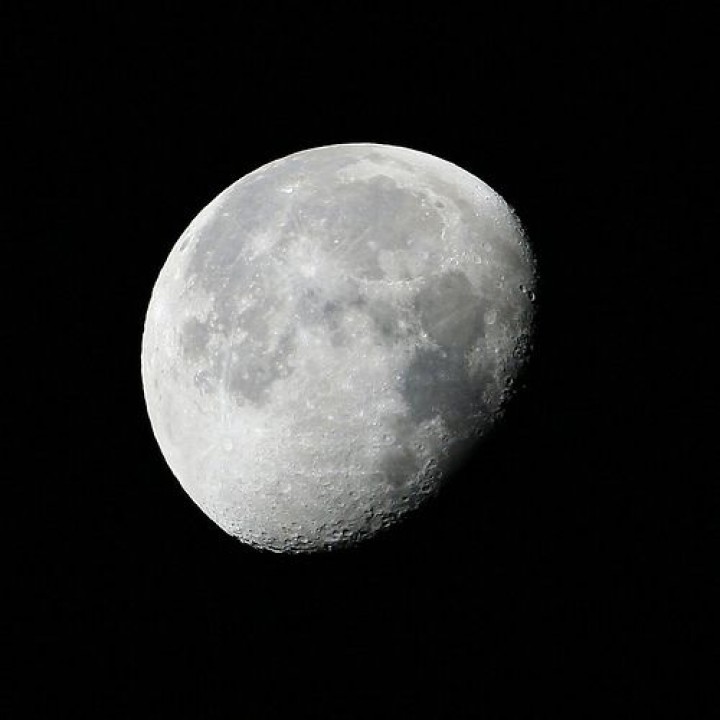
- Science:
More than half of the Moon is illuminated, but not yet full.
- Cultural Meaning:
Symbolizes
- progress and preparation.
Many communities perform rituals or prayers to strengthen intentions during this “high-energy” phase
5. Pournami – The Full Moon (Around Day 14 or 15)
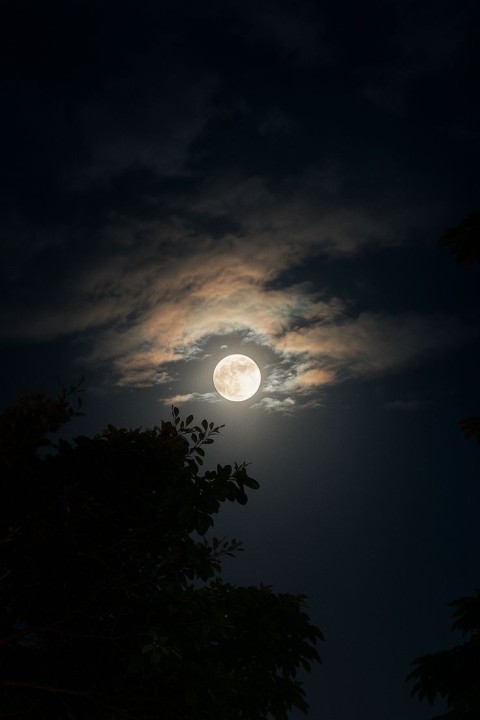
- Scientific Explanation:
The Moon is on the opposite side of Earth from the Sun, with its fully illuminated face visible to us.
- Astronomical Notes:
Gravitational pull during the Full Moon creates stronger tides (spring tides).
The brightness makes it a challenge for astronomers but a delight for photographers.
- Cultural & Spiritual Significance:
Pournami is celebrated in temples with special poojas, fasting, and meditation. It’s believed to be a time of clarity, high energy, and spiritual connection. Festivals like Guru Pournami and Chitra Pournami are tied to this phase.
6. Waning Phase – Krishna Paksha (Days 16–29)
- Science:
After the Full Moon, the visible portion begins to decrease each night as the Moon moves toward the Sun.
- Spiritual Symbolism:
This phase is about release, rest, and reflection, making it ideal for letting go of old patterns or closing chapters before the next cycle begins.
- Astronomical Note:
This phase leads back to Amavasai, completing the 29.5-day lunar cycle.
Why the Lunar Cycle Matters
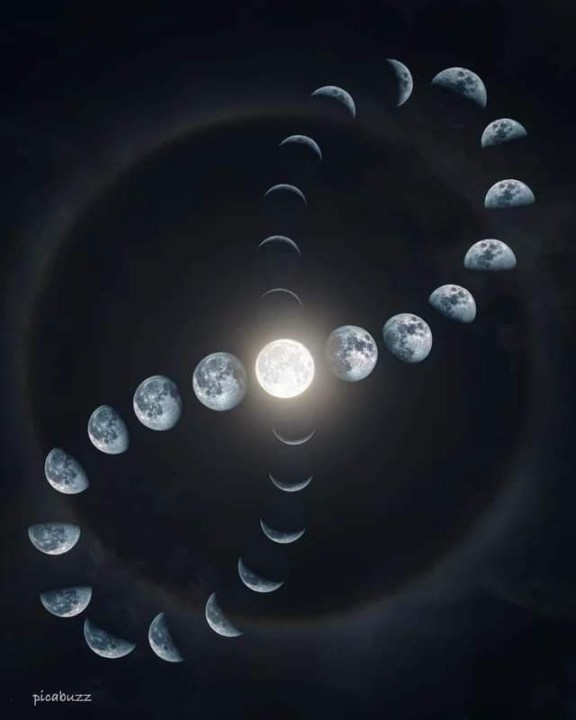
- For Nature:
Many species use lunar phases for migration, reproduction, and feeding patterns.
- For Agriculture:
Farmers traditionally follow the Moon’s phases for sowing and harvesting, believing crops grow better during waxing phases.
- For Human Behavior:
Studies show circadian rhythms and sleep patterns can be influenced by bright Full Moon nights.
- For Spiritual Growth:
The cycle offers a natural rhythm for reflection, intention-setting, and personal transformation.
Interesting Facts
- The lunar cycle lasts about 29.5 days, which is why some months have two New Moons or two Full Moons.
- A Supermoon occurs when the Full Moon coincides with the Moon’s closest approach (perigee), making it appear larger and brighter.
- The word “month” itself originates from “moon,” highlighting its role in early calendars.
Conclusion
The Moon’s journey from Amavasai to Pournami is a beautiful reminder that life itself moves in cycles — of beginnings, growth, completion, and renewal. Each phase of the Moon offers lessons: the quiet strength of Amavasai, the hope of the waxing crescent, the balance of the half Moon, the energy of Pournami, and the reflective calm of the waning phase.
By tuning into this natural rhythm, we can live with more awareness, balance, and harmony — finding our own light, even in phases of darkness. So next time you look up at the night sky, remember: the Moon’s cycle is not just a story of the cosmos, but also a story of us.
(Blog by)-Kalaiyarasi R






